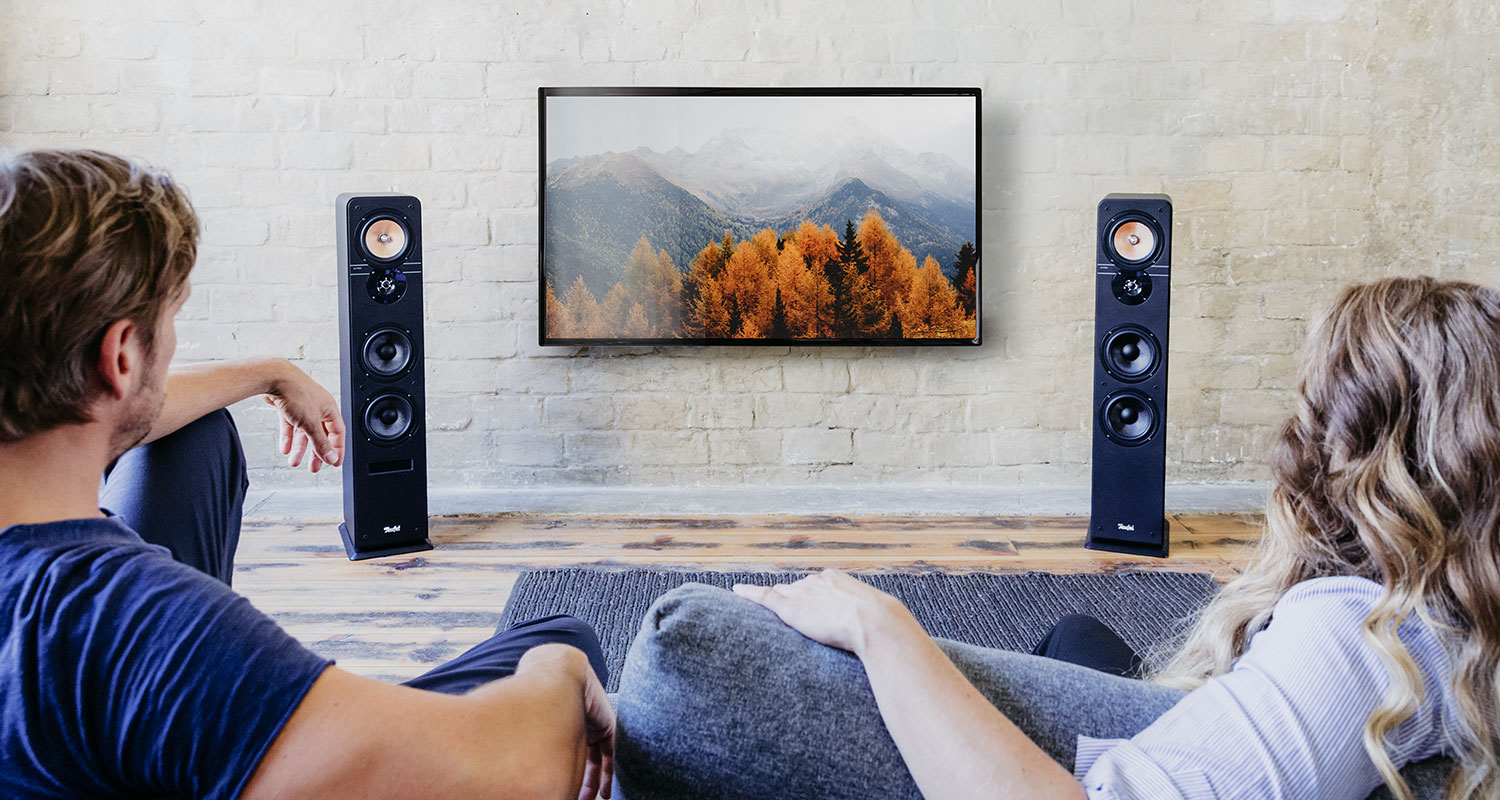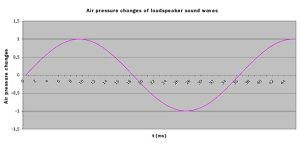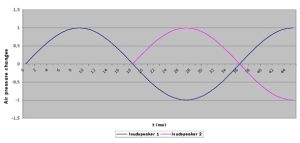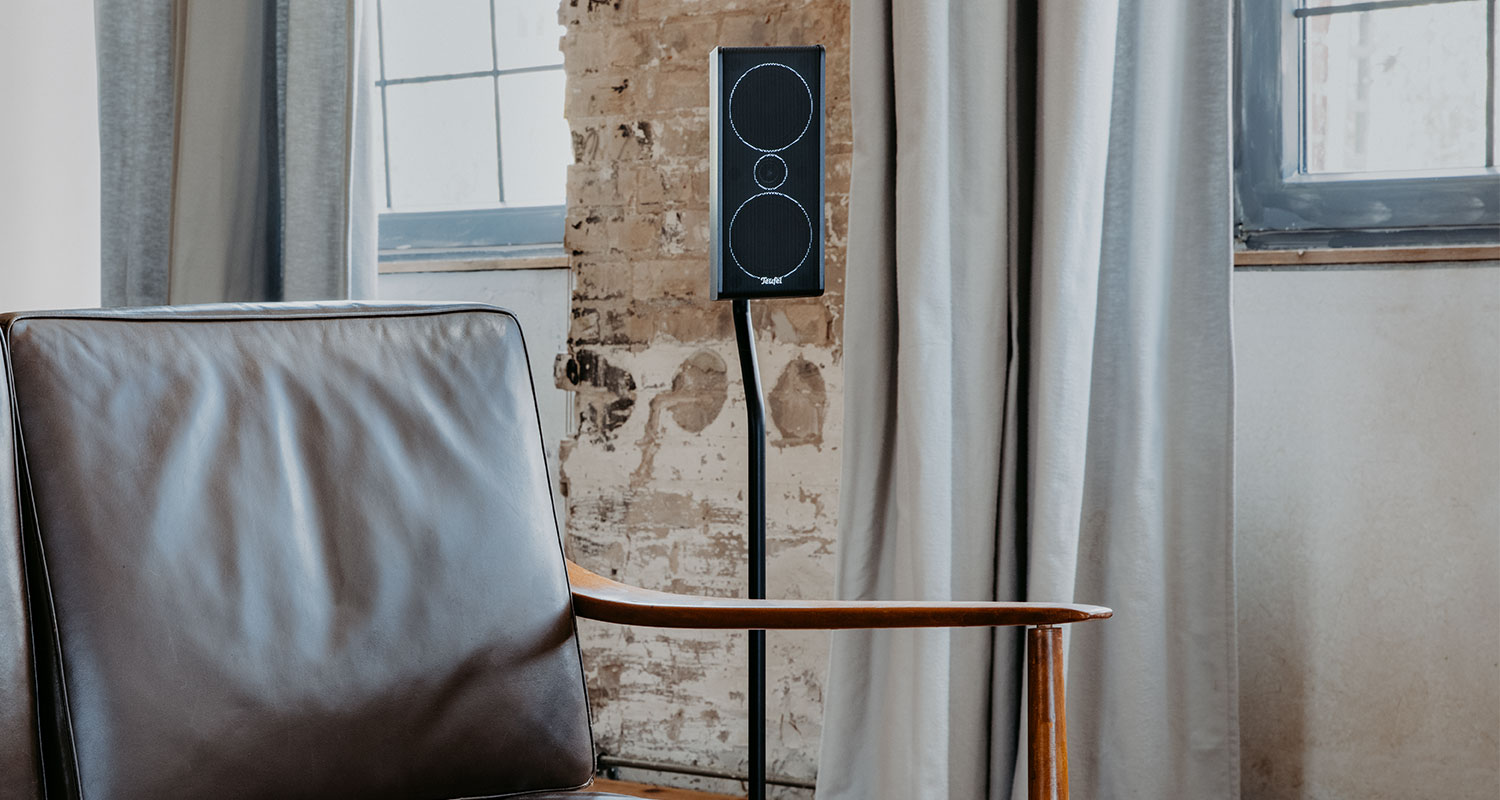Phase positions and phase shifts are often mentioned when loudspeakers do not sound as they should. The terms refer to the vibration behaviour of sound waves and are an important factor in acoustics. As a result, phase shifts can be useful – you just have to know how to use them correctly. Read on and let us teach how to utilize this trick to improve your home audio system.
How do phase shifts work with loudspeakers?
In a multi-channel system, a room is filled with sound by more than one loudspeaker. Therefore, for the best sound quality, it’s vital that the loudspeakers are exact coordination with one another. The sound waves are radiated by the forward and backward vibrations of the loudspeaker tweeters and then travel through the room. Sound waves that are radiated by the tweeters at the time of its maximum forward excursion also have the highest sound pressure. The vibrations of the air or the diaphragm can also be represented as a sinusoidal curve:
You can see here that the Y-axis shows the changing air pressure, while the horizontal X-axis represents time. The phase shifts show the two different phase positions next to one another. If two loudspeakers generate the highest air pressure at the same time (their tweeters vibrate synchronously), the phase position is 0°. If one speaker generates the highest air pressure, while the other speaker generates the lowest air pressure, the phase shift between the two is 180°.
This could be caused by one of the two loudspeakers being reversed. This would mean that when the signal is applied, one speaker would push the diaphragm forward and the other would push it backwards. Therefore, the phase shift can also occur because one speaker starts playing later than the other:
But phase shifts are not always due to the loudspeakers alone. They can result solely from the listening position – if one loudspeaker is further away from the listener than the other. Meaning that the sound takes longer to reach the listener. In addition, room acoustics – the way sound is reflected in the room – can also cause phase shifts.
What effect do phase shifts have on the sound?
Enough theory, now for practice! Let’s start with the bad news first: phase shifts can cause acoustic problems. Sound waves that are phase-shifted at the same frequency can falsify the sound through so-called interference. The signals can cancel each other out or amplify each other. This is referred to as room modes. Especially with multi-channel systems, the risk of this is comparatively high.
If both loudspeakers emit an in-phase signal, i.e. the phase shift is 0°, then the signal can be heard much louder than intended in the area where they meet. However, with a phase shift of 180°, the interference can cause the sound waves to “cancel out” each other. In such a case, the affected audio frequency in the audible range is either significantly quieter or can no longer be heard at all.
But this principle of extinction can also be used: It is used in noise-cancelling headphones to reduce ambient noise. In simple terms, these headphones use a microphone to pick up ambient noise and emit a signal with the same frequency, phase-shifted by 180°. The effect is that the ambient noise is significantly attenuated. We only hear what we actually want to hear.
Phase shifts in the low-frequency range
The lower the frequency of the sound, the more cancellations and additions due to phase shifts can be perceived. The crossover frequency between subwoofer and satellite is particularly critical because both loudspeaker types reproduce the same (low) frequencies, but are not at the same location.
All Teufel loudspeaker systems have been developed in such a way that the individual components play “in phase”. So if the satellites and the subwoofer are the same distance from the listening position, the phase is absolutely correct; the phase rotation is 0° and the signals add up.
Multi-channel audio systems at Teufel
[product id=”26074,28216,27924″]
What can be done against extinctions caused by phase shifts?
If the subwoofer is not at the same distance from the listening position as the satellites, you may have to adjust the phase to avoid cancellation and room modes. Teufel subwoofers are equipped with a switch that rotates the phase of the subwoofer by 180°. Alternatively, there are controls that allow you to adjust the phase continuously between 0° and 180°. Finding the right setting requires little effort and time. It is helpful to make the adjustment in pairs.
You can then sit in the listening position. As soon as the music or film (preferably with a high bass component) is played, the other person can slowly adjust the phase control from 0° to 180°. You will notice a change in the upper bass range. Because our systems are designed so that ideally the two signals add up to a smooth frequency response, you get the best sound when the bass is loudest!
Therefore phase shifts and time differences can also be compensated by calibrating a multi-channel system on the receiver.
Teufel sound from two sides
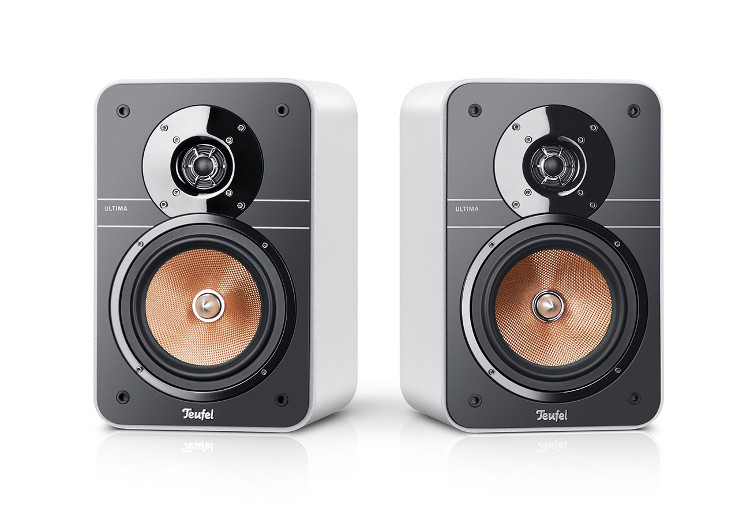
▶ Ultima 40: We thought legends could evolve as well, so we missed an upgrade for Ultima 40Opens in new tab. The stereo set delivers a differentiated and stirring sound down to the last detail. Since 2018, a tweeter phase plug has been on board. In addition, the stand-up speakers with their brushed surface look a bit better.
▶ Ultima 20: Although the Ultima 20 is one size smaller, it still plays big. The 2-way system is ideal for rooms up to 20 sqm. Hence, we have integrated a bass reflex system so that the speakers also develop a lot of steam in the bass range. Here, too, we have introduced a tweeter phase plug for fine tuning.
[product id=”36821,31419,27916″]
Conclusion on the phase shift
- First, phase shifts describe the oscillation behaviour of sound waves in relation to each other.
- Secondly, phase shifts between loudspeakers in a system can be caused by the loudspeakers themselves, the listening position and the room acoustics.
- Thirdly, phase shifts can cause interference.
- Fourth, this can cause sound waves to superimpose or cancel each other out.
- Lastly, the effects of interference on the auditory impression at low frequencies can be particularly large.
